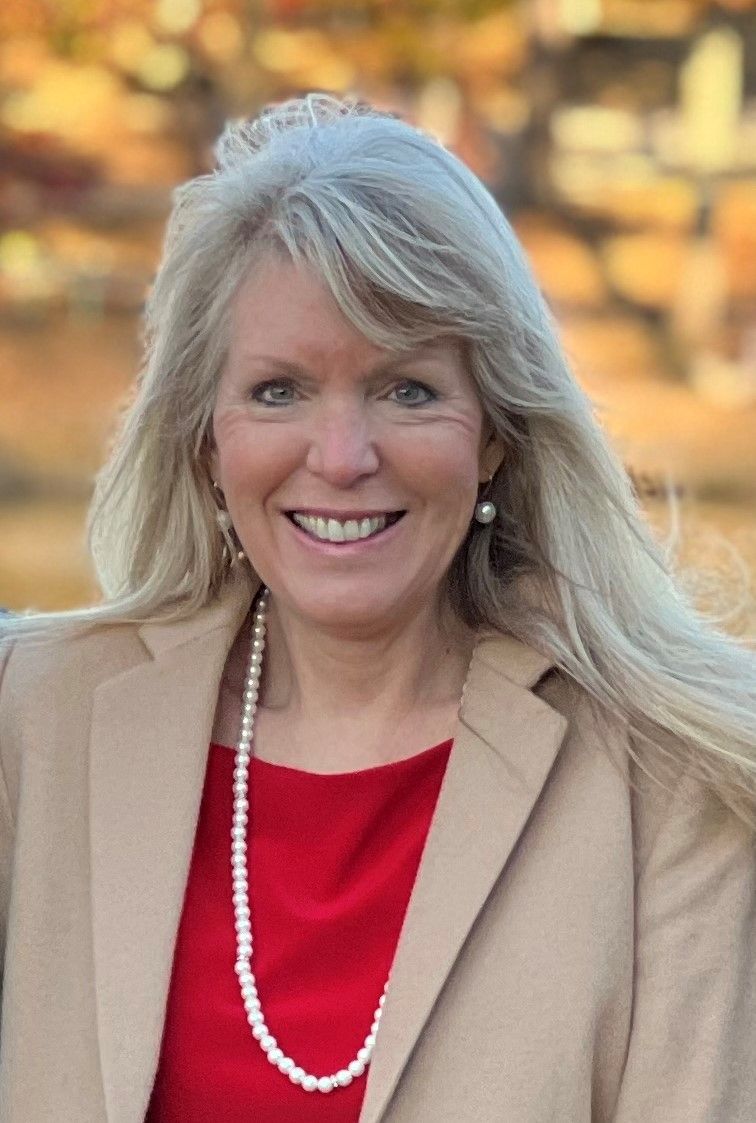Inside the Laboratory: The Richardson Group at the University of South Carolina
"Inside the Laboratory" is a joint series with LCGC and Spectroscopy, profiling analytical scientists and their research groups at universities all over the world. This series spotlights the current chromatographic and spectroscopic research their groups are conducting, and the importance of their research in analytical chemistry and specific industries. In this edition of “Inside the Laboratory,” Susan Richardson of the University of South Carolina discusses her laboratory’s work with using electron ionization and chemical ionization with gas chromatography–mass spectrometry (GC–MS) to detect DBPs in complex environmental matrices, and how her work advances environmental analysis.
Disinfection byproducts (DBPs) are chemical compounds formed when disinfectants used in water treatment, such as chlorine, react with organic and inorganic matter naturally present in the water (1). These by-products, which include trihalomethanes (THMs), haloacetic acids (HAAs), chlorite, and bromate, are of significant concern because of their potential adverse effects on human health (1). Research in this field often focuses on identifying and quantifying emerging DBPs using advanced analytical techniques like gas chromatography–mass spectrometry (GC–MS) and liquid chromatography–tandem mass spectrometry (LC–MS/MS) (1). Additionally, the development of safer water treatment methods and monitoring strategies aims to minimize DBP formation while ensuring effective disinfection (1). Understanding and mitigating DBPs is crucial for maintaining safe drinking water and protecting public health.
Dr. Susan Richardson is the Arthur Sease Williams Professor of Chemistry in the Department of Chemistry and Biochemistry at the University of South Carolina in Columbia, South Carolina. She received her Ph.D. in 1989 at Emory University (2). Over her career, she has received numerous honors and awards, including election into the National Academy of Engineering in 2024. She started her career as a Postdoctoral Research Associate and Research Chemist in the U.S. Environmental Protection Agency (EPA) before joining the Department of Chemistry and Biochemistry at the University of South Carolina in 2014 (2).
Downtown Columbia South Carolina skyline, home of the University of South Carolina. | Image Credit: © Kevin Ruck – stock.adobe.com

Richardson’s current research focuses on identifying and measuring disinfection byproducts (DBPs), novel algal toxins, and emerging contaminants in water. She also investigates the transformation of emerging contaminants in drinking water treatment and after advanced oxidation treatments like UV/Cl₂ for water reuse (2). Her team is pioneering total organic fluorine (TOF) methods to analyze per- and polyfluoroalkyl substances (PFAS) in PFAS-free firefighting foams and environmental waters. She is also investigating DBPs from real-world microplastics, as well as levels of 6-PPD-quinone in South Carolina creeks and rivers (2). They also explore archaeological biomarkers in ancient pots, revealing residues from ceremonial drinks of Central American indigenous cultures (2). The research emphasizes MS and develops advanced analytical methods to extract and measure contaminants in complex matrices, enabling comprehensive environmental and archaeological assessments (2).
In this edition of “Inside the Laboratory,” Richardson discusses her group’s research using TOF, GC-MS, and LC-MS methods to identify DBPs and quantify PFAS, as well as her latest publication in the journal Water Research (3).
Susan Richardson of the University of South Carolina. Photo Credit: © Susan Richardson

Can you provide a brief snapshot of your laboratory group and the projects that you and your team is currently working on?
Our current graduate students include Patrick Justen, Coley Beavers, Erin Katie Jaynes, and two brand-new graduate students: Rae Reviel and Haritha Lawan. We also recently had two visiting students from the University of Milan for 6 months in my laboratory helping with our microplastics project (Alessandro Becchi and Tommaso Gatti), as well as a visiting student from Germany (Emily Boekenholt).
Can you explain how you utilize different ionization modes in mass spectrometry to detect and quantify trace levels of DBPs in complex environmental matrices such as drinking water and wastewater?
We use electron ionization (EI) and chemical ionization (CI) with GC–MS(/MS) to detect and quantify DBPs in drinking water and wastewater, and we also use electrospray ionization (ESI) with LC–MS to detect other emerging contaminants like PFAS and 6-ppd-quinone, as well as new high molecular weight DBPs. Whatever tool it takes to solve the problem, we use! We are also fans of a new technique called vacuum-assisted sorbent extraction (VASE), which is used with GC–MS and is similar to solid phase microextraction (SPME). However, unlike SPME, VASE has a much larger sorbent bed and extracts semivolatiles and volatiles from the headspace of a sample with a vacuum, which extracts so much more material (potentially an exhaustive extraction). This is a great technique for very complex matrices like wastewater or urine. We recently published a method paper where we can detect iodinated DBPs in drinking water at low ppt levels with only a 10 mL water sample (3). It also works just as well on a highly complex matrix-like urine. What’s great is that it leaves all the “crap” behind in a urine sample, only extracting the volatile/semivolatiles, which allows us to run many of these samples without having to change the GC inlet liner or clip the column (which is typical when you have a tough matrix).
Your work involves applying mass spectrometry to identify contaminants in microplastics. What are the unique analytical challenges presented by these materials, and how have your methods advanced to address them?
Microplastics are more complex than I expected! One thing we learned is that you shouldn’t use your expensive glassware (like Soxhlet extractors) to extract chemicals from them. You will never (ever) be able to get that stuff off the glass. Even a muffle furnace is no match for these microplastics! My 4th year PhD student, Patrick Justen, came up with an ingenious solution, which was using our 125 mL amber bottles for extraction (the same ones we use for our quantitative DBP extractions). That way, we just throw the bottles away (or recycle) when we are done! They are cheap, and we don’t have to worry about lingering residues that we can’t remove, which would lead to cross-contamination.
In your most recent study, you combined total organic fluorine (TOF) analysis with LC-MS/MS to create a PFAS hotspot map. Could you explain the advantages of using TOF as a screening tool compared to traditional target methods?
A huge advantage of TOF is that it captures the broad spectrum of PFAS: both the known and the unknown. We found that LC–MS/MS analysis of 33 PFAS only captures approximately 2% of the TOF present in our South Carolina surface waters (3). So, TOF can give a more complete picture. I think it is an important screening tool, otherwise you are missing a lot! Our TOF methods work with a combustion-ion chromatography system. It is the only instrument in my laboratory that is not a mass spectrometer, and it is worth its weight in gold. We have been using it to measure total organic chlorine, bromine, and iodine in drinking water for decades (helps to know the complete picture of halogenated DBPs), and it was a no-brainer to extend this work to total organic fluorine.
Your findings indicate that LC–MS/MS only accounted for 2% of the TOF measured. What do you think this reveals about the limitations of relying solely on target PFAS analysis in environmental monitoring?
It tells us we are missing a lot if we only do target analysis of a limited number of compounds.
With 38 out of 40 sampled locations in South Carolina showing detectable levels of organic fluorine, what are the broader implications of these results for environmental and public health in the region?
It shows just how prevalent PFAS are! It also tells us that there is work to do! There is a lot of non-target work needed to uncover what this missing organic fluorine is (what the chemical structures are). Are they compounds that have been reported before or are there new ones in our waters that we don’t know yet? We plan to expand on this further with new work we are doing with our University of South Carolina Clean Water Institute.
How do you and your group stay updated with advancements in analytical chemistry techniques and technologies?
Conferences! We love to go to scientific conferences and learn from others. Of course, we also read the literature (and LCGC International!), but conferences are often where the latest information is presented.
Can you discuss a recent innovation or development in chromatography that you find particularly impactful or exciting?
This isn’t exactly chromatography, but I find ion mobility spectrometry (IMS) to be a great new separation tool. Erin Baker at the University of North Carolina Chapel Hill is using it to separate PFAS isomers that cannot be separated using conventional LC (in fact, she uses IMS with LC). This has helped her group find new PFAS in alligator blood. How cool is that!
References
- Minnesota Department of Health, Disinfection and Disinfection Byproducts. State of Minnesota. Available at: https://www.health.state.mn.us/communities/environment/water/factsheet/ddbp.html#:~:text=Although%20chlorine%20has%20been%20a,action%20to%20reduce%20the%20DBPs. (accessed 2024-11-14).
- University of South Carolina, Susan D. Richardson. SC.edu. Available at: https://sc.edu/study/colleges_schools/chemistry_and_biochemistry/our_people/directory/richardson_susan.php (accessed 2024-11-14).
- Forster, A. L. B.; Geiger, T. C.; Pansari, G. O.; Justen, P. T.; Richardson, S. D. Identifying PFAS Hotspots in Surface Waters of South Carolina Using a New Optimized Total Organic Fluorine Method and Target LC–MS/MS. Water Res. 2024, 256, 121570. DOI: 10.1016/j.watres.2024.121570
New Study Reviews Chromatography Methods for Flavonoid Analysis
April 21st 2025Flavonoids are widely used metabolites that carry out various functions in different industries, such as food and cosmetics. Detecting, separating, and quantifying them in fruit species can be a complicated process.

.png&w=3840&q=75)

.png&w=3840&q=75)



.png&w=3840&q=75)



.png&w=3840&q=75)



